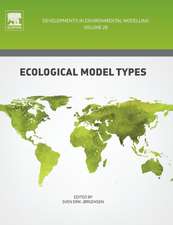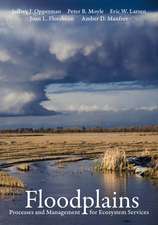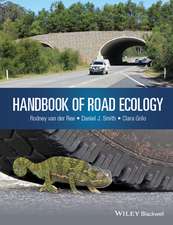The Ecology of Temporary Waters
Autor D. Dudley Williamsen Limba Engleză Paperback – 31 oct 2001
| Toate formatele și edițiile | Preț | Express |
|---|---|---|
| Paperback (2) | 270.91 lei 6-8 săpt. | |
| Blackburn Press – 31 oct 2001 | 270.91 lei 6-8 săpt. | |
| SPRINGER NETHERLANDS – 22 ian 2012 | 634.68 lei 6-8 săpt. |
Preț: 270.91 lei
Nou
Puncte Express: 406
Preț estimativ în valută:
51.84€ • 55.43$ • 43.22£
51.84€ • 55.43$ • 43.22£
Carte tipărită la comandă
Livrare economică 17 aprilie-01 mai
Preluare comenzi: 021 569.72.76
Specificații
ISBN-13: 9781930665491
ISBN-10: 1930665490
Pagini: 205
Dimensiuni: 216 x 140 x 13 mm
Greutate: 0.29 kg
Editura: Blackburn Press
Locul publicării:United States
ISBN-10: 1930665490
Pagini: 205
Dimensiuni: 216 x 140 x 13 mm
Greutate: 0.29 kg
Editura: Blackburn Press
Locul publicării:United States
Cuprins
1: Introduction to Temporary Waters.- 1.1 What are temporary waters?.- 1.2 Classification of temporary waters.- 1.3 Importance of temporary waters.- 2: The Physical Factors that Govern the Formation of Temporary Waters.- 2.1 The runoff cycle.- 2.2 Components of subsurface water.- 2.3 Basin and channel formation.- 3: Abiotic Features of Temporary Waters.- 3.1 Water balance.- 3.2 Water temperature.- 3.3 Turbidity.- 3.4 Dissolved oxygen and carbon dioxide.- 3.5 Other chemical parameters.- 4: The Biota.- 4.1 The temporary water community — global scale.- 4.2 The temporary water community — local scale — case histories.- 4.3 Other inhabitants of temporary waters.- 4.4 Comparison of permanent and temporary water faunas.- 4.5 Community dynamics and trophic relationships.- 4.6 Community structure — biotic versus abiotic control.- 5: Special Adaptations.- 5.1 Introduction.- 5.2 Variability in life cycles.- 5.3 Phenotypic and genotypic variation.- 5.4 Physiological adaptations.- 5.5 Physiology of desiccation.- 6: Colonization Patterns.- 6.1 Introduction.- 6.2 Adaptive “strategies” of colonizing animals.- 6.3 Active colonization.- 6.4 Passive colonization.- 6.5 Colonization and competition.- 6.6 Temporary waters as islands in time and space.- 7: Other Temporary Water Habitats.- 7.1 Introduction.- 7.2 Treeholes.- 7.3 Pitcher plants.- 7.4 Bromeliads.- 7.5 Inflorescences.- 7.6 Snowfields.- 7.7 Deserts.- 7.8 Dung.- 7.9 Saltwater rock pools.- 7.10 Starfish.- 8: Applied Aspects of Temporary Waters.- 8.1 Aquaculture/agriculture rotation — an ancient art.- 8.2 Floodplain fisheries.- 8.3 Habitats for vectors of disease.- 9: Temporary Waters as Study Habitats.- 9.1 Investigations of the structure and function of aquatic populations and communities.- 9.2 Investigations ofcolonization patterns, dynamics and mechanics of temporary water species.- 9.3 Investigations of the physiological adaptations of temporary water faunas.- References.












